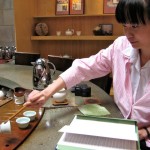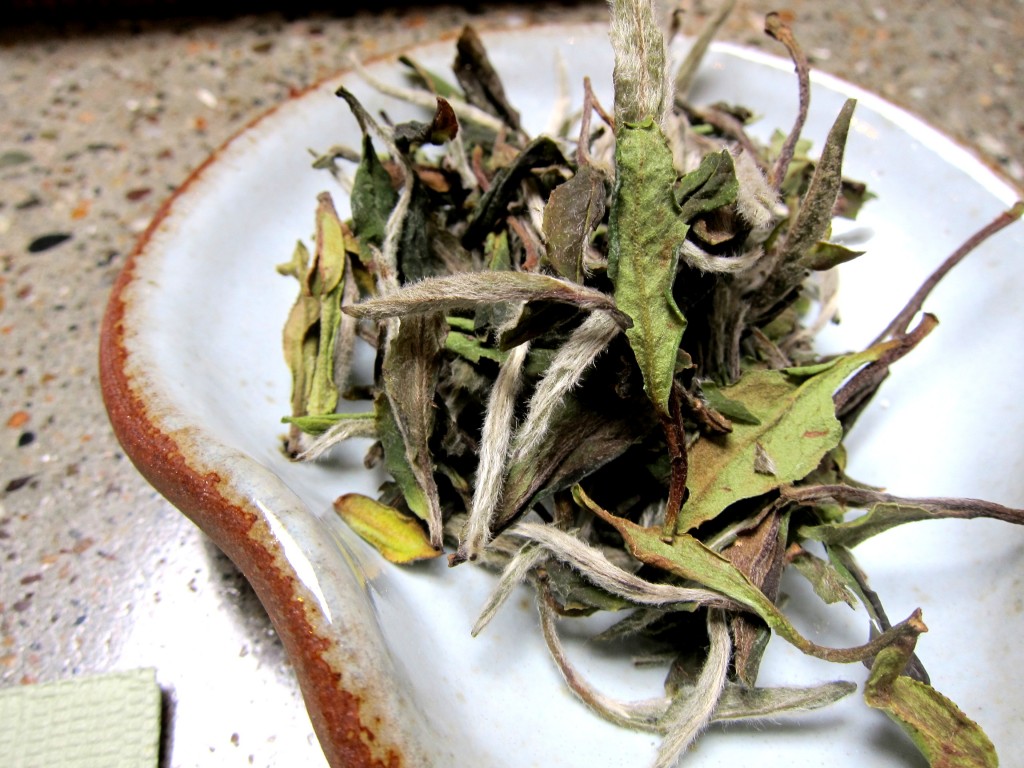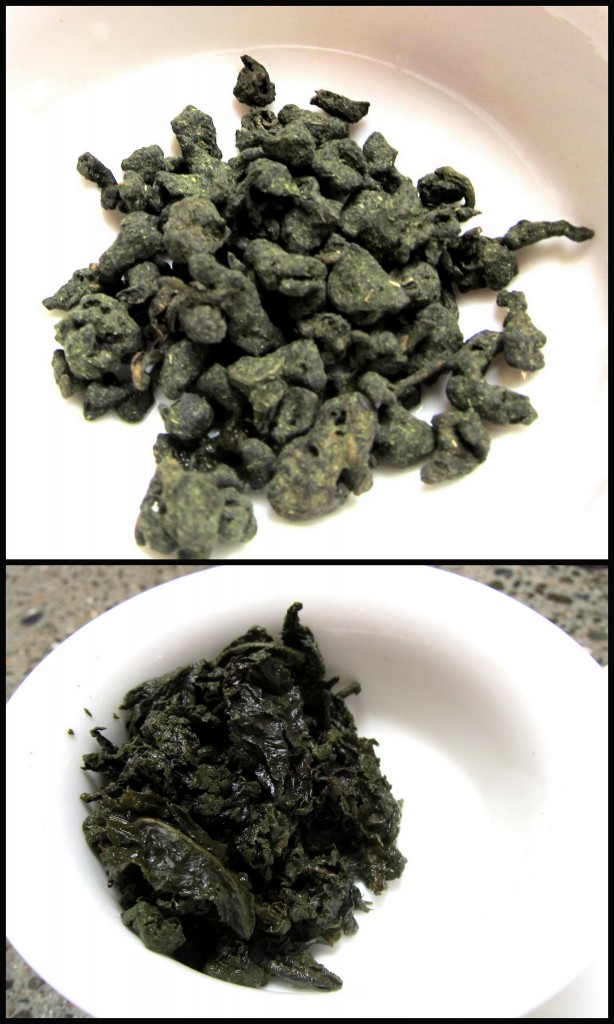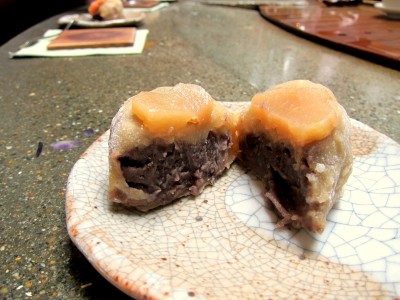
Tiana, Kristen and I went on a tea date today, the perfect thing to do on a post-finals Sunday afternoon. And we don’t tea-date half-heartedly, we did a flight of 5 teas (people normally do flights of 3), with mochi(*) to pair. The idea was to structure it like a full meal: an appetizer, a light starter, a main tea, a dessert, and a palate cleanser to wind down at the end(**). I’m feeling too light-headed right now to be in writer’s mode, so here’s a briefing:

1. White Peony King: (white tea, 2011 spring harvest from Fujian, China)
After a quick rinse to open up the buds (the downy things in the picture) and the leaves, it smells seedy to me, and in Iris’ words, “like an unripe stone fruit, like apricot or peach”. The light topaz liquid has a gentle sweetness to it, it alternates between smooth vegetal and dry notes, it’s definitely floral overall.
Description from Teance:
“[…] the first pick of the year from White Tea Varietal #1 in Fuding, Fujian […] Fullest flavor and best body out of all the White Teas. Grown at 1000 meters, these are some of the original White tea bushes indigenous to the area. Very fresh, full-bodied melon taste. Traditionally grown, harvested, and processed by sun drying and hot air indoor drying.
[This particular crop has] pervasive bursts of apple and pear, and a soup of fruity sweet brew. Aroma slightly more raw than previous years, long lasting and consistent.”
I suppose teas change their taste after harvested for a year.
2. Four Seasons Oolong: (November 2011 harvest from Nantou, Taiwan)
Light and floral, just like the last two times I had it.
3. Yunnan Gold: (red tea, 2011 winter harvest from Yunnan, China)
Rinsed once, steeped in 205 F water for about a minute, and you get this red-clay-color liquid with a honey shine, a hint of ground black pepper in the smell, and a full-bodied, aged, barky taste followed by a sweet undertone. Iris’ and my favorite red tea. Now also Tiana’s favorite. 😀

4. King’s Tea Ginseng Oolong: (Fujian, China)
Its extremely long-lasting sweet aftertaste makes it the perfect dessert tea. The leaves are rolled in ginseng powder, which gives it an “oyster food” appearance (in Iris’ words). You steep it for also about a minute in 205 F water (no rinsing). On the tongue, it’s medicinal, at the throat, it’s sweet. (Because ginseng amplifies the characteristics of other ingredients, so it amplifies the sweet lingering of the oxidized, partly fermented tea leaf in this case).
Update from Kristen: just now, 3.5 hours after our tea session, the sweet aftertaste suddenly comes back in her throat! Pretty amazing, isn’t it?
5. Buddha’s Hand (2011 winter harvest from Wenshan, Taiwan)
My favorite light oolong, fruity and light as ever. Similar to but smoother than the Four Seasons. Both Kristen and Tiana like it. 
By the fourth steep of the Buddha’s Hand, all three of us felt calm in our mind and hungry in our stomach, so on we went to a wholesome Japanese dinner at O Chamé.

(*) The mochi today: keemun (a black tea) in the mochi skin, azuki (red bean) paste inside, and a slice of mushy sweet potato on top. Gently sweet. It matches the Four Seasons Oolong the best.
(**) For a food session, the palate cleanser comes before the dessert, but for tea, I think it should come after, otherwise, the palate cleanser would be overshadowed by the strong main tea and you just can’t taste it.
Siberian ginseng (Eleutherococcus senticosus) is in the same family, but not genus, as true ginseng. Like ginseng, it is considered to be an adaptogenic herb. The active compounds in Siberian ginseng are eleutherosides, not ginsenosides. ..*…
View all of the newest post on our very own web portal
http://www.healthmedicine101.com